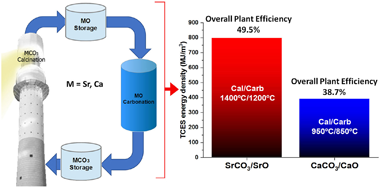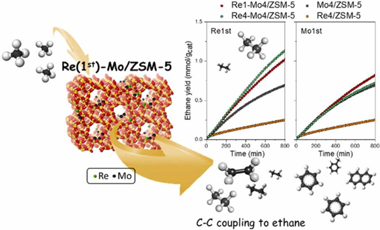Artículos SCI
2022
2022
Nanotecnología en Superficies y Plasma
Role of Surface Topography in the Superhydrophobic Effect-Experimental and Numerical Studies
Ibrahim, SH; Wejrzanowski, T; Przybyszewski, B; Kozera, R; Garcia-Casas, X; Barranco, AMaterials, 15 (2022) 3112
Show abstract ▽
Within these studies, the effect of surface topography for hydrophobic coatings was studied both numerically and experimentally. Chemically modified polyurethane coating was patterned by application of a laser beam. A set of patterns with variously distant linear peaks and grooves was obtained. The cross section of the pattern showed that the edges of the peaks and grooves were not sharp, instead forming a rounded, rectangle-like shape. For such surfaces, experimental studies were performed, and in particular the static contact angle (SCA), contact angle hysteresis (CAH), and roll-off angle (ROA) were measured. Profilometry was used to create a numerical representation of the surface. Finite volume method was then applied to simulate the behavior of the water droplets. The model developed herewith enabled us to reproduce the experimental results with good accuracy. Based on the verified model, the calculation was extended to study the behavior of the water droplet on the simulated patterns, both spiked and rectangular. These two cases, despite a similar SCA of the water droplet, have shown extremely different ROA. Thus, more detailed studies were dedicated to other geometrical features of such topography, such as the size and distance of the surface elements. Based on the results obtained herewith, the future design of superhydrophobic and/or icephobic topography is discussed.
Mayo, 2022 | DOI: 10.3390/ma15093112
Reactividad de Sólidos
The SrCO3/SrO system for thermochemical energy storage at ultra-high temperature
Amghar, N; Ortiz, C; Perejon, A; Valverde, JM; Maqueda, LP; Jimenez, PESSolar Energy Materials and Solar Cells, 238 (2022) 111632
Show abstract ▽

Thermochemical energy storage (TCES) has attracted interest in the last years due to the possibility of attaining high energy densities, seasonal storage capacity and greater efficiencies than currently commercial thermal energy storage systems using molten salts. This work analyses the potential of an ultra-high temperature TCES system based on the SrCO3/SrO system. The process relies upon the reversible decomposition of SrCO3 into SrO and CO2. As proposed in previous works for the integration of the Ca-Looping process to store energy in CSP plants, both the calcination (endothermic) and carbonation (exothermic) reactions are carried out in a closed CO2 loop. At these conditions, the required temperature to attain full calcination in short residence times is around 1400 degrees C whereas carbonation takes place at about 1200 degrees C. Using this process, the energy density potentially achievable by the storage material is very high (around 2000 MJ/m(3)) while the ultra-high carbonation temperature would improve thermoelectric efficiency. The enhancement of the multicycle performance of the SrCO3/SrO system using refractory additives is also explored. Even though current commercial CSP plants with tower technology cannot yet operate at these ultra-high temperatures, recent advances in the development of high-temperature solar receivers could allow operation at 1400 degrees C in the medium term. Finally, a conceptual model of the integration of the SrCO3/SrO system in a CSP plant supports higher overall efficiency and energy density, but lower solar-to-electric efficiency due to thermal losses.
Mayo, 2022 | DOI: 10.1016/j.solmat.2022.111632
Nanotecnología en Superficies y Plasma
Analysis of the effect of cationic ratio Bi3+/Fe3+ on the magnetic and multiferroic properties of BiFeO3 nanoparticles synthesized using a sonochemical-assisted method
Palomino-Resendiz, RL; Bolarin-Miro, AM; Pedro-Garcia, F; Sanchez-De Jesus, F; Espinos-Manzorro, JP; Cortes-Escobes-Escobedo, CACeramics International, 48 (2022) 14746-14753
Show abstract ▽
This study examined the effects of the cationic ratio of Bi3+/Fe3+ via X-ray photoelectron spectroscopy (XPS) on the magnetic and multiferroic properties of BiFeO3 nanoparticles synthesized using a sonochemical-assisted method. X-ray diffraction revealed the successful synthesis of single-phase BiFeO3 powder after annealing the sonicated material at 723 K. The powder was composed of agglomerates of rounded particles with a mean particle size of 35 nm. XPS was performed to determine the Bi3+/Fe3+ ratio as a function of the heat treatment process and its relationship with secondary phases, which can modulate the magnetic properties of the nano powders. The cationic ratio obtained by XPS confirmed that the powders obtained at 623 and 923 K have excess Bi3+ and Fe3+, respectively, which induces the formation of Bi24Fe2O39 and Bi2Fe4O9 as the majority phases. Powder annealing at 723 K revealed a ferromagnetic order with specific magnetization of 1.8 Am-2/kg. This ferromagnetic behavior was preserved after applying spark plasma sintering (SPS) at 923 K. By contrast, conventional sintering at 1023 K promotes antiferromagnetic order. In addition, the dielectric properties of the ceramic material of the sintered powders showed a behavior related to a typical ferroelectric material.
Mayo, 2022 | DOI: 10.1016/j.ceramint.2022.02.011
Materiales y Procesos Catalíticos de Interés Ambiental y Energético
Characterization of Re-Mo/ZSM-5 catalysts: How Re improves the performance of Mo in the methane dehydroaromatization reaction
Lopez-Martin, A; Sini, MF; Cutrufello, MG; Caballero, A; Colon, GApplied Catalysis B-Environmental, 304 (2022) 120960
Show abstract ▽

In this study, the promoting effect of rhenium addition as a co-dopant on Mo/ZSM-5 catalysts system has been analysed. Hence, bimetallic (Re-Mo/ZSM-5) catalysts have been synthesized using a sequential impregnation methodology. The catalytic performance for direct aromatization of methane reaction has been determined and correlated with their physical and chemical state combining multiple characterization techniques. An important synergy between Mo and Re, affected by the sequential impregnation, has been observed. Thus, Re1-Mo4/ZSM-5 in which Re has been incorporated first shows notably higher aromatic yields and stability against deactivation. Characterization results suggest that catalytic enhancement is due to the important effect of Re presence in close interaction with Mo. Improved evolution of ethane through C-C coupling would be correlated to this catalytic performance. As we discuss, Mo nature and location in the bimetallic systems are strongly conditioned by Re and the impregnation sequence and favours such intermediate step.
Mayo, 2022 | DOI: 10.1016/j.apcatb.2021.120960
Nanotecnología en Superficies y Plasma
Influence of Femtosecond Laser Modification on Biomechanical and Biofunctional Behavior of Porous Titanium Substrates
Beltran, AM; Giner, M; Rodríguez, A; Trueba, P; Rodríguez-Albelo, LM; Vázquez-Gámez, MA; Godinho, V; Alcudia, A; Amado, JM; López-Santos, C; Yadir, TMaterials, 15 (2022) 2969
Show abstract ▽
Bone resorption and inadequate osseointegration are considered the main problems of titanium implants. In this investigation, the texture and surface roughness of porous titanium samples obtained by the space holder technique were modified with a femtosecond Yb-doped fiber laser. Different percentages of porosity (30, 40, 50, and 60 vol.%) and particle range size (100-200 and 355-500 mu m) were compared with fully-dense samples obtained by conventional powder metallurgy. After femtosecond laser treatment the formation of a rough surface with micro-columns and micro-holes occurred for all the studied substrates. The surface was covered by ripples over the micro-metric structures. This work evaluates both the influence of the macro-pores inherent to the spacer particles, as well as the micro-columns and the texture generated with the laser, on the wettability of the surface, the cell behavior (adhesion and proliferation of osteoblasts), micro-hardness (instrumented micro-indentation test, P-h curves) and scratch resistance. The titanium sample with 30 vol.% and a pore range size of 100-200 mu m was the best candidate for the replacement of small damaged cortical bone tissues, based on its better biomechanical (stiffness and yield strength) and biofunctional balance (bone in-growth and in vitro osseointegration).
Mayo, 2022 | DOI: 10.3390/ma15092969
- ‹ anterior
- 50 of 410
- siguiente ›














